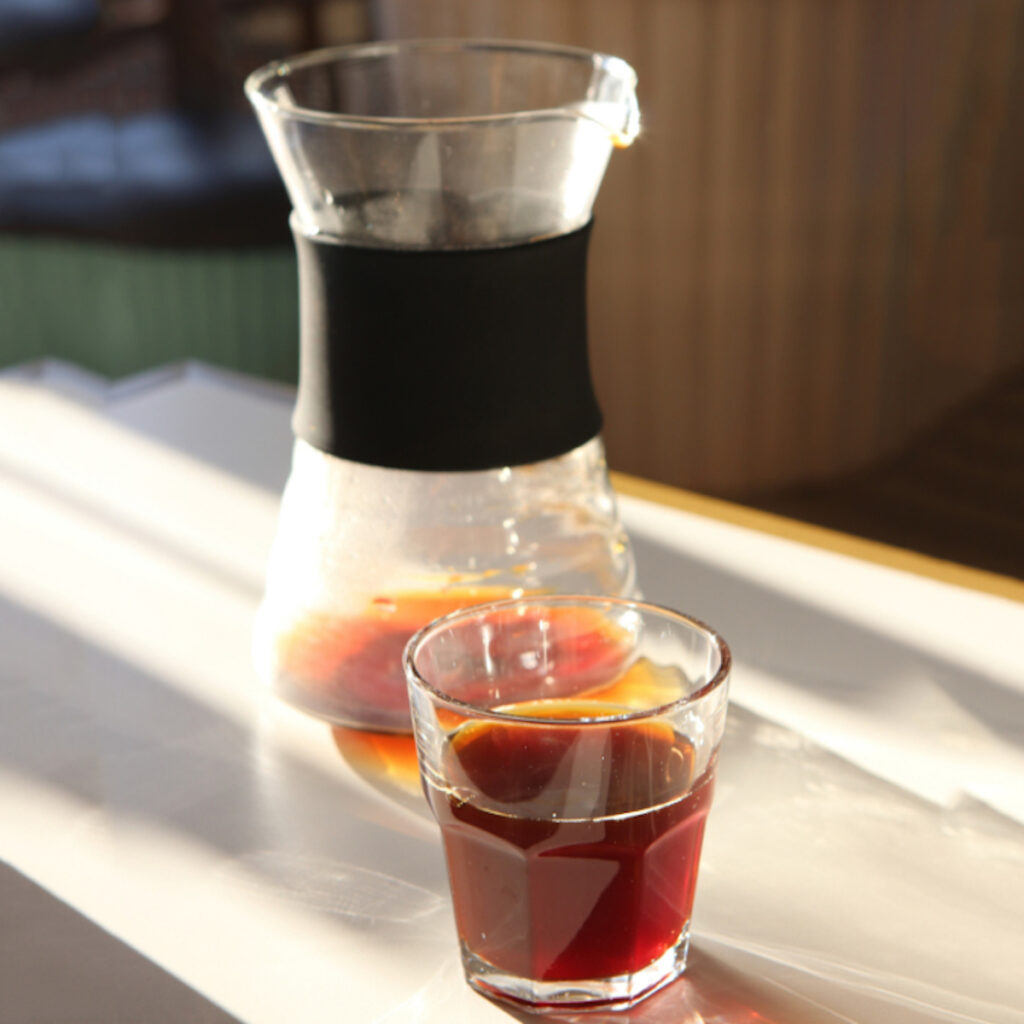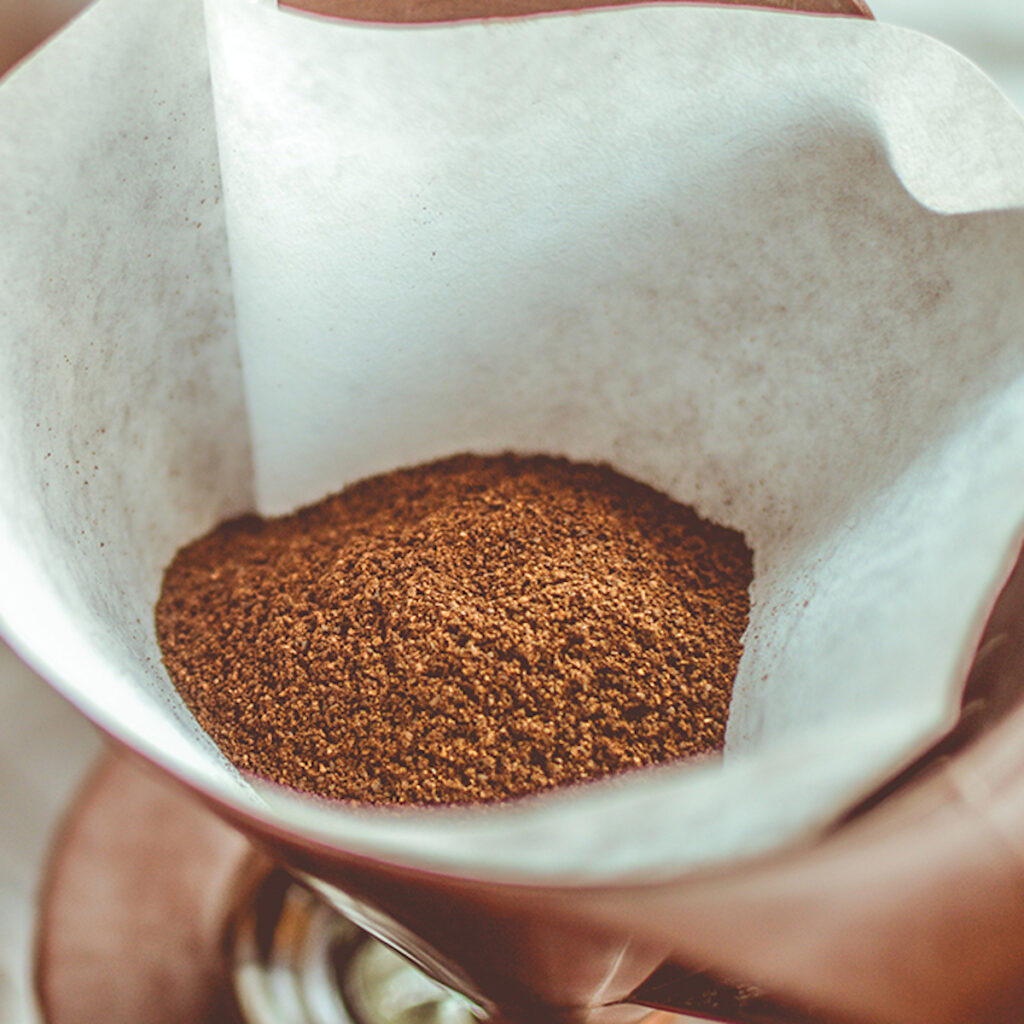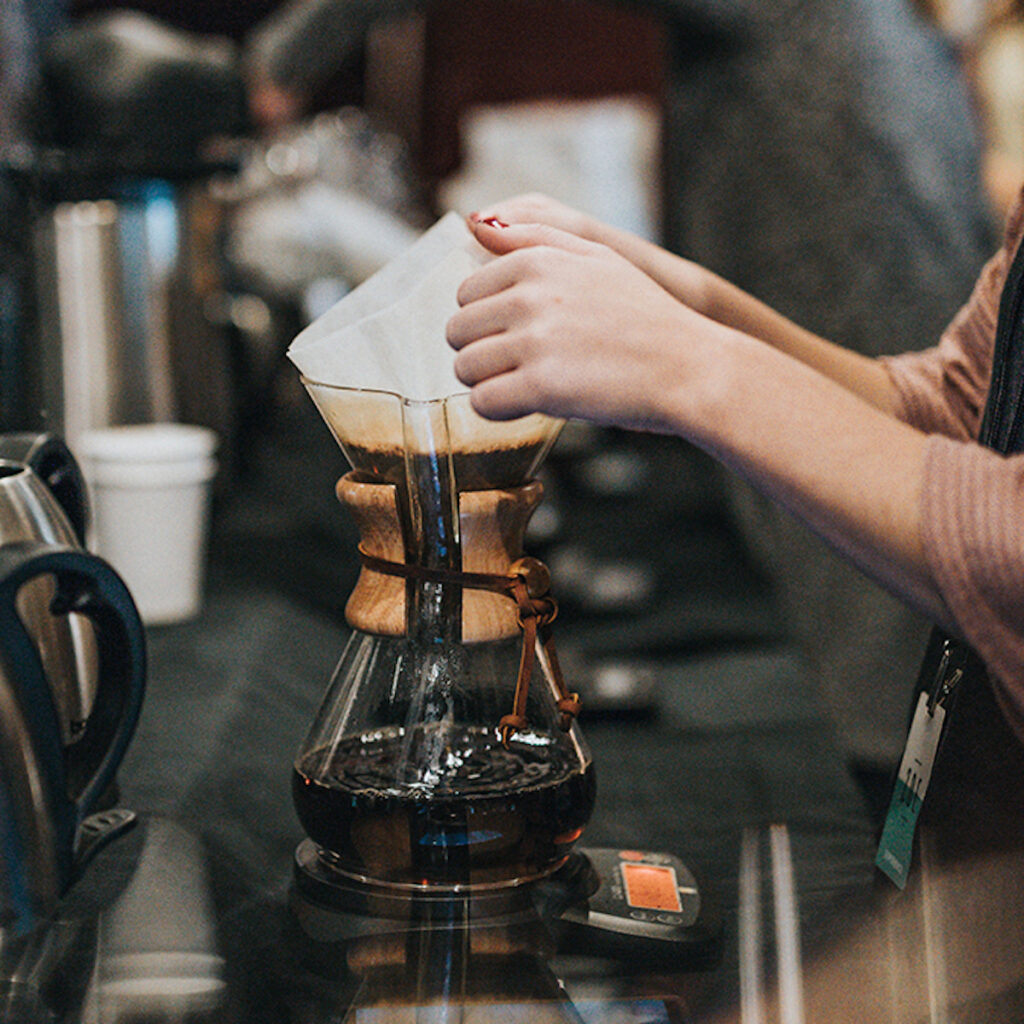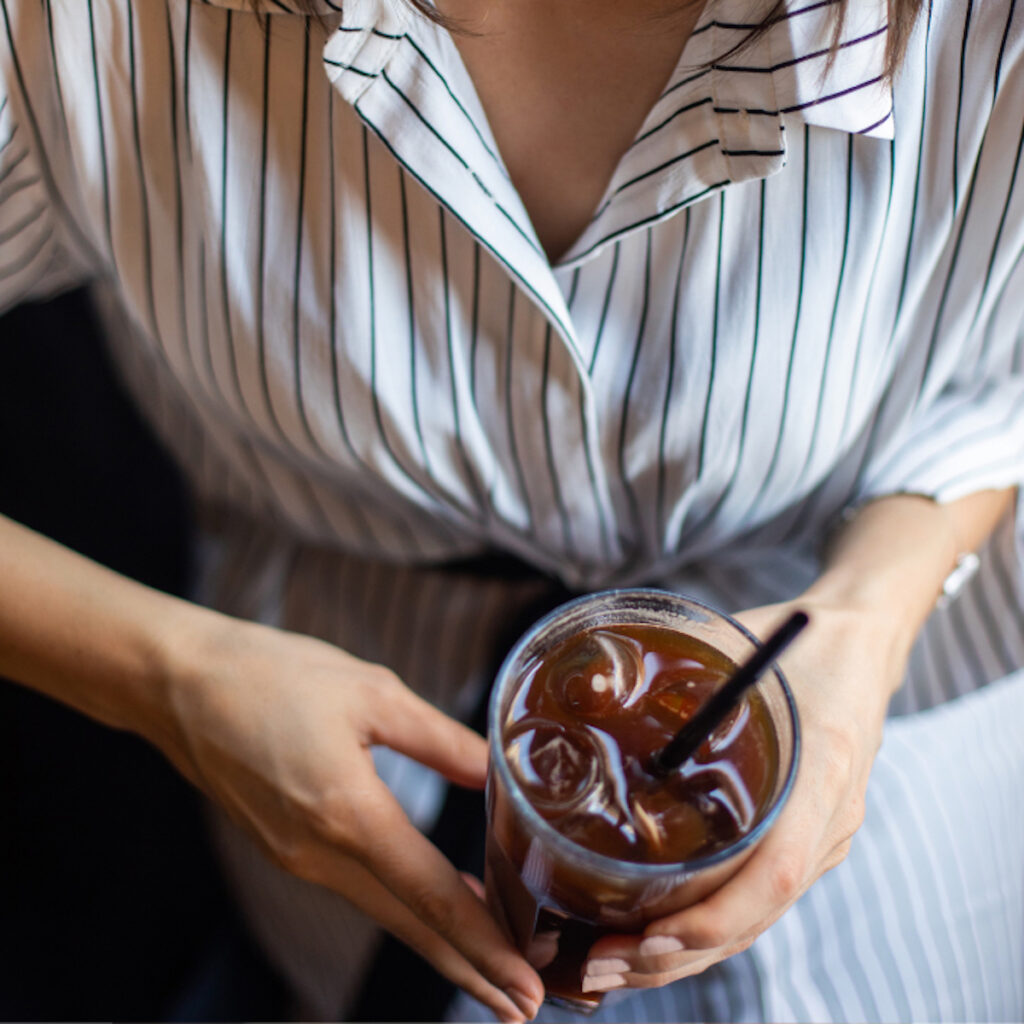So you love your cold brew coffee and want to make it at home? Same!
I love cold brew regardless of whether it is 90 degrees or 20 degrees outside. It’s the smooth, less acidic taste for me. Hot coffee still has a place and I do enjoy drinking it but cold brew is definitely a favorite.
I typically drink medium or dark roast coffee and I switch between blends and single-origin coffee. Different countries produce such different coffee so it can be nice to try coffee from different parts of the world.

There are some differing opinions on which type of coffee or which roasts are best for cold brew coffees. In my experience, the type of coffee doesn’t matter quite as much as the ground size and the brewing process. Not to say that it doesn’t matter at all, because, I did find some people say lighter roasts don’t work as well as darker roasts.
Looking at the big names in coffee like Starbucks and Dunkin Donuts they each have their own cold brew blends. Starbucks uses a medium roast cold brew blend and Dunkin uses a dark roast cold brew blend. I’ve had both and liked them both!
If you’re not sure the type of coffee to use I think the best option would be to start with the type of coffee you normally drink and then experiment with others. Personal preferences play a big role in the best coffee beans to use for cold brewing.
What type of Coffee Grounds Should You Use for Cold Brew?

As mentioned before, the type of roast or type of coffee isn’t as important as the size of the grounds and the brewing process.
With that in mind, it is also worth considering whether to grind whole beans at home or buy coffee grounds. There are many benefits to grinding your own coffee. Things like air and moisture can affect the taste of the coffee once they come in contact with the grounds. Grinding your own coffee also gives you control over the size of the grounds.
Coffee grounds purchased at the store are fine grounds which is perfect for a French press or coffee maker but not great for making cold brew. The cold brew process requires coarsely ground coffee. And we are talking about ground coffee, not instant coffee.
The best way to bring out the sweet flavors of cold brew and end up with a less acidic result is to use coarsely ground coffee beans or coffee grounds.
If you want to make cold brew coffee at home but don’t want to bother with grinding the coffee beans there are options for you! You can actually purchase cold brew coffee grounds in packs. Starbucks has the Starbucks® Cold Brew Coffee Pitcher Packs. Dunkin Donuts has something similar called the Dunkin’ Cold Brew Coffee Packs kit.
Now that we established the type of coffee grounds necessary for the cold brew method let’s review the actual brewing process.
How to Make Cold Brew Coffee?
The cold brewing process is a slow and generally low-temperature brewing process. It requires coarsely ground coffee to be added to water in a container and left to brew for 8 to 24 hours. Cold brew differs from iced coffee in that iced coffee is drip coffee put over ice and is the same strength as regular drip coffee whereas cold brew is usually much stronger.

Because the process is so long a finely ground coffee will yield a more acidic and bitter taste. I personally like cold brew coffee for its low acidity and less bitterness. If you are going to use finely ground coffee I recommend cutting your brewing time in half to prevent over-extraction. The clean-up process tends to be a lot easier with a larger grind size as well.
Equipment
- Room temperature water – preferably filtered water
- Coarse coffee grounds
- Coffee grinder if you are using whole coffee beans
- A large container like a mason jar to brew the coffee in or a French press can be used to make cold brew coffee in smaller batches.
Measurements
Regular drip coffee which is what most people drink is anywhere from 1 part coffee to 16 or 20 parts water. On the other hand, cold brew is often 1:4 or 1:8 – so much stronger than other brewing methods. When you make the cold brew coffee you are essentially making a cold brew concentrate or coffee concentrate that needs to be mixed with something to dilute it. It can be mixed with things like water, juice, milk, or ice.

I typically use 6 ounces of coarsely ground coffee to 24 ounces of water (1:6 ratio) which gives me a concentrate that I can mix with water to dilute it a bit.
If you would like to make a drinkable brew (not a concentrate) I would recommend a 1:8 ration, so for example, using 1 cup dry coarsely ground coffee with 24 ounces of water will yield a less concentrated cold brew coffee.
Actions
- Add the coffee grounds and the water (preferably filtered water) to a large jar or container.
- Stir to mix.
- Cover the jar and let sit on the counter or somewhere safe that is room temperature for 8-24hrs.
- Once complete, strain the coffee grounds by using a cheesecloth and bowl or a fine strainer.
- Depending on how strong the coffee is you may need to dilute it before consuming it.
- Enjoy!
- The cold brew will typically last about 7 days in the refrigerator.
Conclusion
Although there are differing opinions on what type of coffee to use for cold brew one thing is for sure coarsely ground coffee is a necessity along with the 8-12 hour steeping time. There is actual research going on looking at the science of the cold brew process so it is possible that more recommendations will come out after the research results are released.
Here are a few things to keep in mind:
1. Experiment with different types of coffee.
2. Use room temperature or slightly cold water and don’t over-infuse the grounds. Don’t go over 24 hours.
3. Determine and note the ration grounds to water you are using so you know if you need to dilute it or not.
4. Store your coffee properly in an airtight container in the refrigerator.
